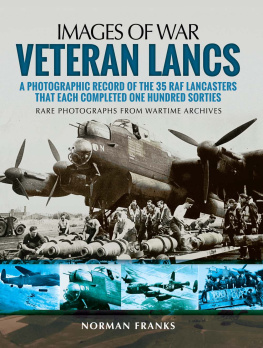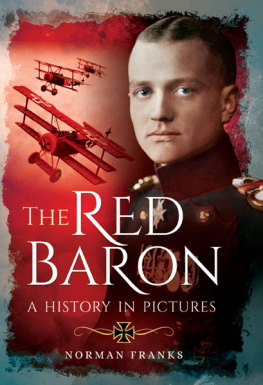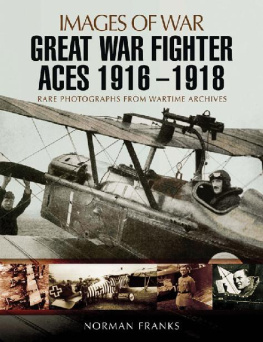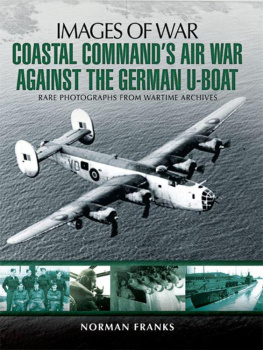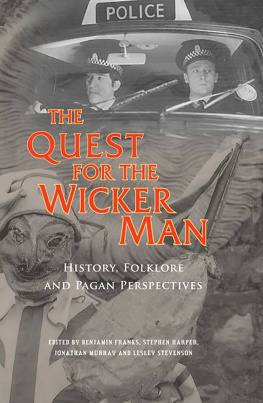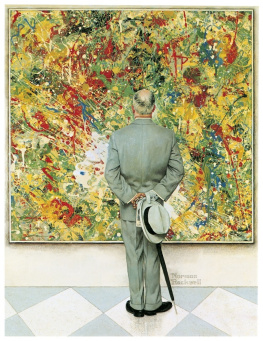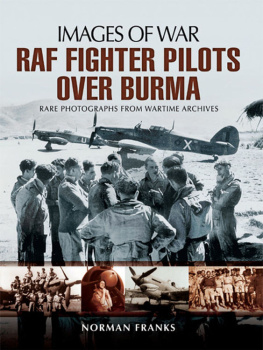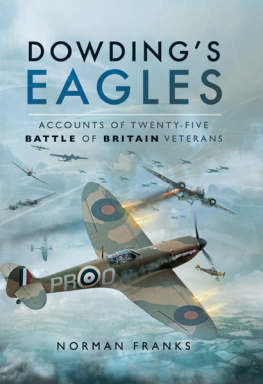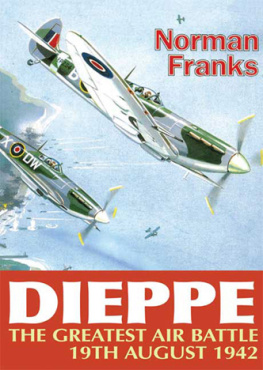Norman Franks - Veteran Lancs
Here you can read online Norman Franks - Veteran Lancs full text of the book (entire story) in english for free. Download pdf and epub, get meaning, cover and reviews about this ebook. year: 2016, publisher: Pen & Sword Books, genre: Non-fiction. Description of the work, (preface) as well as reviews are available. Best literature library LitArk.com created for fans of good reading and offers a wide selection of genres:
Romance novel
Science fiction
Adventure
Detective
Science
History
Home and family
Prose
Art
Politics
Computer
Non-fiction
Religion
Business
Children
Humor
Choose a favorite category and find really read worthwhile books. Enjoy immersion in the world of imagination, feel the emotions of the characters or learn something new for yourself, make an fascinating discovery.
- Book:Veteran Lancs
- Author:
- Publisher:Pen & Sword Books
- Genre:
- Year:2016
- Rating:3 / 5
- Favourites:Add to favourites
- Your mark:
- 60
- 1
- 2
- 3
- 4
- 5
Veteran Lancs: summary, description and annotation
We offer to read an annotation, description, summary or preface (depends on what the author of the book "Veteran Lancs" wrote himself). If you haven't found the necessary information about the book — write in the comments, we will try to find it.
Veteran Lancs — read online for free the complete book (whole text) full work
Below is the text of the book, divided by pages. System saving the place of the last page read, allows you to conveniently read the book "Veteran Lancs" online for free, without having to search again every time where you left off. Put a bookmark, and you can go to the page where you finished reading at any time.
Font size:
Interval:
Bookmark:


First published in Great Britain in 2016 by
PEN & SWORD AVIATION
an imprint of
Pen & Sword Books Ltd,
47 Church Street, Barnsley,
South Yorkshire.
S70 2AS
Copyright Norman Franks 2016
ISBN 978-1-47384-726-2
The right of Norman Franks to be identified as Author of this Work has been asserted by him in accordance with the Copyright, Designs and Patents Act 1988.
A CIP catalogue record for this book is available from the British Library
All rights reserved. No part of this book may be reproduced or transmitted in any form or by any means, electronic or mechanical including photocopying, recording or by any information storage and retrieval system, without permission from the Publisher in writing.
Typeset by Mac Style Ltd, Bridlington, East Yorkshire
Printed and bound in Great Britain by CPI
Pen & Sword Books Ltd incorporates the imprints of Pen & Sword Aviation, Pen & Sword Family History, Pen & Sword Maritime, Pen & Sword Military, Pen & Sword Discovery, Wharncliffe Local History, Wharncliffe True Crime, Wharncliffe Transport, Pen and Sword Select, Pen and Sword Military Classics
For a complete list of Pen & Sword titles please contact:
Pen & Sword Books limited
47 Church Street, Barnsley, South Yorkshire, S70 2AS, England.
E-mail:
Website: www.pen-and-sword.co.uk
Most of the photographs in this book have been collected over many years of research into RAF history and in particular from former aircrew of Bomber Command, many of whom flew in these veteran aircraft. Families of those who have since died also contributed pictures and information. In particular, I should like to thank my good friend Andy Thomas for his help with photos from his massive collection of RAF aircraft. Other images came from the archives of the late Chaz Bowyer and Peter Green.
Norman R. Franks
January 2016
At the start of the Second World War RAF Bomber Command had only twin-engined bombers, such as the Hampden, Whitley, Blenheim and the Wellington plus, of course, the single-engined Fairley Battle. All had very limited capabilities, not only in their bomb loads but, more importantly, their range.
Nevertheless the bomber crews struggled manfully with these types and did their utmost to deliver their bomb loads to their assigned targets, despite poor navigational and bombing aids. As the war progressed it became obvious that larger bomber types were needed, meaning longer range and larger bomb capacity. This could only be achieved by using aircraft with four engines. The first design was the Short Stirling, followed by the two that were to become the mainstay of Bomber Command, the Handley-Page Halifax and the Avro Lancaster. The latter was a development of the Avro Manchester, designed with two engines. Later, of course, the twin-engined DH Mosquito joined the ranks of long-range bombing aircraft.
Of the three heavies the Lancaster, the subject of this book, achieved the greatest fame. It carried a crew of seven: pilot, navigator, bomb-aimer, engineer, wireless operator, mid-upper and tail gunners. It had a range of 1,660 miles, carrying 14,000lbs of bombs or 1,040 miles with 20,000lbs. Bomb load make-up varied according to the target, but generally comprised General Purpose High Explosive bombs of 500 or 1,000lbs, and incendiaries. The most common was one 4,000lb bomb, known as the cookie and a mix of 4lb or 30lb incendiaries. The object was for the 4,000-pounder to cause massive damage while the incendiaries would ignite and burn anything inflammable within the debris. Against heavy industrial targets they might carry one 8,000lb bomb and six 500lb bombs with either instantaneous or delay fusing.
The Lancaster made its first flight in May 1941 and 44 Squadron became the first to re-equip with the type. Bomber Command was of course committed to night bombing although one of the first daylight raids came on 17 April 1942, an attack in the Messerschmitt factory at Augsburg, deep into German territory.
With various modifications, a total of 7,366 Lancasters was built during the war and, as will be seen within these pages, only thirty-five achieved 100-plus operations. There is no mystery why there are so few. It took several months to achieve this, sometimes a year or more, and one has to take into account that every Lancaster needed periodic minor and major servicing, engine changes, and repair of battle damage, and so could be off operations for long periods. Lancasters which did manage to record 100 or more operations lived charmed lives, for each bomber could just as easily fail to return from its very first mission as, say, its fiftieth.
It would be nice to know who first began to record operations by painting a bomb symbol on an aircrafts nose section, or even began to paint some sort of emblem too. One suspects that in the early days a squadron commander might have frowned upon the latter practice but very soon the vast majority of bombers, Lancasters, Stirlings or Halifaxes, began to be adorned with the fanciful whims of either aircrew, or ground crew personnel. Each aircraft, of course, belonged to its ground crew. They serviced it, cleaned it, patched up any damage, and each night some crew or other flew it into a dark or darkening sky, and the ground crew would wait anxiously for their aircraft to return to its servicing bay.
It was also the ground crew who would paint the bombs on the fuselage, and the more they were able to add the better they felt about it. Most bombers would be assigned to a regular crew, but other crews could also be assigned. If their Lancaster was being serviced or being repaired, the crew would be assigned a spare aircraft. They might also be away on leave, meaning another crew would fly it on the next operation. Very few, if any, crews would fly one particular aircraft on every trip of their tour. A tour of operations generally hovered around thirty trips, but this figure was not hard and fast. If a flight or squadron commander felt a crew had had a particularly rough period, he might decide to end that crews tour at twenty-eight or twenty-nine. Some crews who, at certain times during the war, were asked if they would do a few more trips, might carry out some thirty-five operations, but again, not all on one Lancaster. There were crews who even volunteered to do a double tour of forty operations.
Another problem with this numbers game was that, within the seven-man crew, each member might have flown a different number from the others. A new skipper had generally to fly one or perhaps two trips with an experienced crew before taking his own out over Germany. Therefore, when he had flown thirty most of his crew had only flown twenty-eight. Or perhaps a navigator or bomb aimer might fly a trip or two with another crew when his crew were on rest but this other crew was down a crew member through ill-health or injury. So he would reach his thirty while others of his crew were still in their late twenties. A man who felt he wasnt going to chance his luck for anyone might elect to leave a crew when he had done his thirty, even though his pals had one or two more to do. He had every right to do so. Sometimes a death or serious injury would necessitate a replacement on a permanent basis, and that man would be way below the number of trips of the rest, in which case, when the rest reached their thirty, he would need to be a spare body or crewman, completing his tour with one or two other crews who were suddenly short of a man.
Next pageFont size:
Interval:
Bookmark:
Similar books «Veteran Lancs»
Look at similar books to Veteran Lancs. We have selected literature similar in name and meaning in the hope of providing readers with more options to find new, interesting, not yet read works.
Discussion, reviews of the book Veteran Lancs and just readers' own opinions. Leave your comments, write what you think about the work, its meaning or the main characters. Specify what exactly you liked and what you didn't like, and why you think so.

